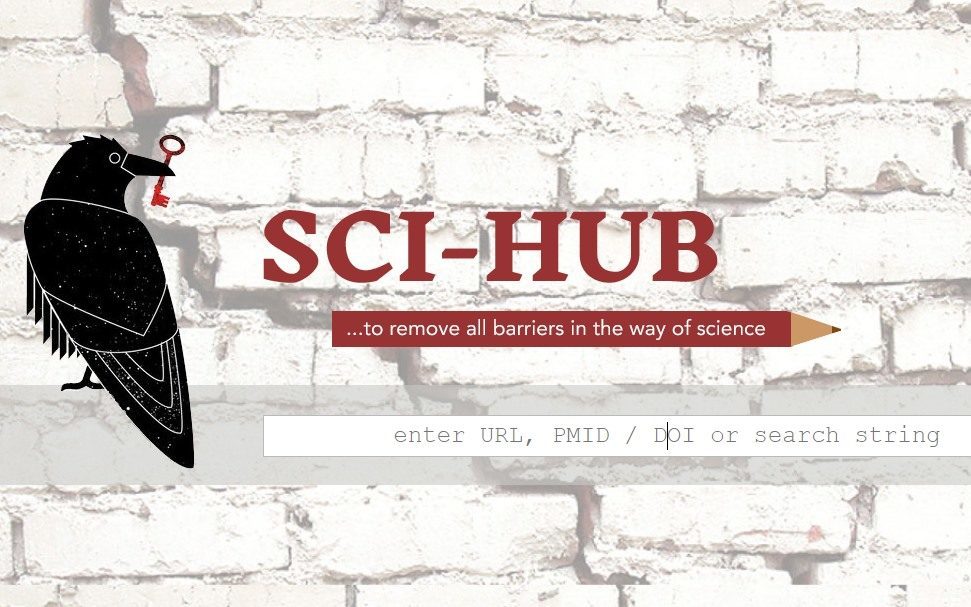The Growing Crisis in Research
Can we fix academic publishing?

Last week, two of the largest academic publishers filed a lawsuit against the social networking site ResearchGate, saying that the site is not doing enough to discourage the pirating of academic papers that they hold the copyright to.
It is their second lawsuit against ResearchGate, the first was filed in Germany last year. That case is ongoing.
Meanwhile, China has been working for more than five months on creating a blacklist of “poor quality” journals that their scientists should not submit to. Once the list is complete and implemented, research published in those journals will not count toward a scientist’s promotion prospects or grant funding.
While these two stories might seem completely separate, they are actually both symptoms of a growing crisis in research. It’s a crisis with complicated origins and no easy resolution, but it’s also a problem that strikes to the core how we share the latest scientific knowledge.
However, the crisis can be summed up like this: Reviewing and publishing research costs money and no one is really sure how to best pay for it.
The Genesis of a Crisis

Frustratingly, there’s no simple beginning to the problem. Though, as with many things in our modern world, it’d be easy to blame it on the internet, the truth is that many of the dominos were in place and falling long before the internet even existed.
The internet certainly contributed, but can’t be pinned as the cause.
Instead, the cause can be traced back to four separate important parts.
- Pressure to Publish: Researchers and have felt a growing pressure to publish. The environment is often described as “publish or perish” as such publication is required to maintain one’s position, seek promotions or to secure funding.
- Limited Publication Space: Though publishers have increased the number of journals available, the numbers haven’t risen as quickly as the number of submissions, making competition for the top journal spots especially intense.
- Increased Costs of Subscription: At a time where academic libraries either have stagnant or shrinking budgets, the cost of subscribing to even the most noted journals is increasing, causing many to reduce the number of subscriptions they keep.
- The Ease of Piracy: The internet has made it easy to share academic research broadly, with or without approval from the copyright holder. Though research was not at the forefront of the early piracy battles, it’s become the subject of a growing piracy landscape, one dominated by Sci-Hub but also compounded by stories like the ResearchGate one.
The issue is that it costs money to publish an academic journal and, whether publishers are profit or non-profit, they have to recoup those costs. However, as 2008 research showed, the budgets of academic libraries, the primary consumers of such journals, have either shrunk or remained flat. This has resulted in many universities scaling back their subscriptions.
While this hasn’t impacted the bottom line for major publishers, who have drawn criticism for their ultra-high profit margins, it has made things difficult for newer and smaller publishers, who often operate at or near a break-even point.
This has led to frustration as more and more researchers (as well as the general public) have run into the issue of paywalled research content. It’s also made it difficult to further expand journal capacity. New journals don’t get created and existing ones don’t get expanded as quickly as they need to in order to keep up with demand.
This has led to a push for a new approach, but it’s one that comes with its own set of drawbacks and concerns.
Enter Open Access

Open access is a fairly straightforward concept that says, when an article is published, it should easily and freely accessible to everyone. Usually, such articles are published under a Creative Commons or similar licensing meaning that users are free to copy, share and distribute the research as they please.
The idea began in the early 1990s but began to rapidly expand in the 2000s with the launch of PLOS One, the largest and best-known open access journal.
The benefits of open access are obvious. There is no paywall or barrier between a research paper and those who might use it. Anyone can read or build off of open access research at any time. This is especially positive in cases where research is government-funded but might otherwise be hidden away from public consumption.
For researchers, the benefits are also obvious. Studies have found that open access works are more regularly cited and it helps increase both the impact of their work and their own reputation in the academic community.
However, where traditional journals charge for access to a work, open access journals have to recoup their costs elsewhere. They do this one of two ways:
- Charging Article Processing Fees: Either charging the submitter of an article when their work is submitted or after it is accepted. This is the model that approximately 28% of open access journals use, including PLOS One. At PLOS journals, those fees range from $1,595 – $3,000 depending on the specific journal.
- Subsidized: Other journals don’t charge article processing or access fees but, instead, either have a direct subsidy from a University, laboratory or other research entity or adopt a different business model such as advertising or selling reprints to make up costs.
While many journals successfully and ethically use both approaches, they also can create problems.
Article processing fees, for example, have led to the rise of predatory journals. Though the issue of journals publishing fake science is as old as research itself, article processing fees have turned it into a business model. No longer having to fight for subscribers, many journals will simply publish anything for a fee, even if it’s nonsense.
There have been many attempts to stop predatory journals, or at least make scientists aware of them. However, many are still caught unaware and, due to the aforementioned “publish or perish” environment, some publish in such journals willingly.
This is why China is working on its list of low quality journals. However, it may have a significant challenge on its hands. It’s incredibly easy for almost anyone to create such a journal and, by most estimates, there are many thousands of such journals and new ones being created every day.
The subsidized model can also produce its own problems depending on where the money comes from and what influence, if any, they exert over the publication.
For all of the flaws of traditional academic publishing, it made its money by luring subscribers by publishing high-quality and important research. The financial incentive isn’t to publish everything or appease a benefactor, but to maintain and grow your reputation as a source for great research.
Coming to a Head
There is simply no easy answer here. There are merits and drawbacks to all of the publishing models and, as of this writing, all five of the major academic publishers have journals that are both open and closed access.
The truth is that we have more researchers working than at any other point in human history and, due to the climate, those researchers are working to put out more literature than ever before. We need to have the journal space to ensure that high-quality research is published and we need to have the access to it.
This is, to say the least, a difficult problem.
Unfortunately, since it is a problem that was created from multiple angles, it’s a problem that will have to be attacked from multiple angles including:
- Decreasing Pressure to Publish: The pressure to publish has resulted in researchers gaming authorship or taking what could be one paper and breaking it into multiple works. Decreasing that pressure can help researchers focus on doing good work and publishing it when it is ready.
- Decreasing Focus on Journal Impact Factor: Impact factor is a measurement of how often a journal is cited. The focus on it tends to concentrate submissions to a small number of popular “must-read” journals and steers researchers away from smaller, newer and possibly open access journals. Unfortunately, predatory journals and the lack of a simple metric for research quality makes this difficult, but questions over the validity of impact factor rankings and the concentration of research toward the top makes this a metric that needs to lose some value.
- Focus on Access: Regardless of business model, there are ways that publishers can put more focus on access. Whether it’s a delayed open access model that makes works freely available after a period of time, offering a price structure that is more workable for universities or even allowing individuals a certain number of free works, there are tools that can reduce the pain points of access without drastically changing the business model.
The goal in all of this is to increase the places that a researcher can go to publish high-quality research that is peer reviewed and reasonably accessible to those who need it.
Otherwise, the only option is to continue down our current path where research often struggles to get published and then, once it is, struggles to get read.
Bottom Line
Academic publishing hasn’t changed drastically since its inception in the 17th century. Though the internet revolutionized how we listen to music, watch movies and even how we read books, it didn’t have the same impact on academic publishing.
There are many reasons for that including a resilience to change, the lack of mass market appeal of the product and the relative power held by the major academic publishers. Regardless, the realities of the internet are catching up to scientific publishing and they are combining with long-running challenges facing researchers that are forcing the industry to change drastically.
However, it’s important to remember that we’re not dealing with the latest blockbuster film or the next great new single when talking about these issues. Research plays a very different role in how it improves our society and it does so in a very different way.
The conversations we’ve had about entertainment and art on the internet do not and cannot apply to how we talk about research.
Simply put, the needs of a creator in academia is very different from the needs of an artist or filmmaker. We need to remember that as this story unfolds.
Want to Reuse or Republish this Content?
If you want to feature this article in your site, classroom or elsewhere, just let us know! We usually grant permission within 24 hours.
